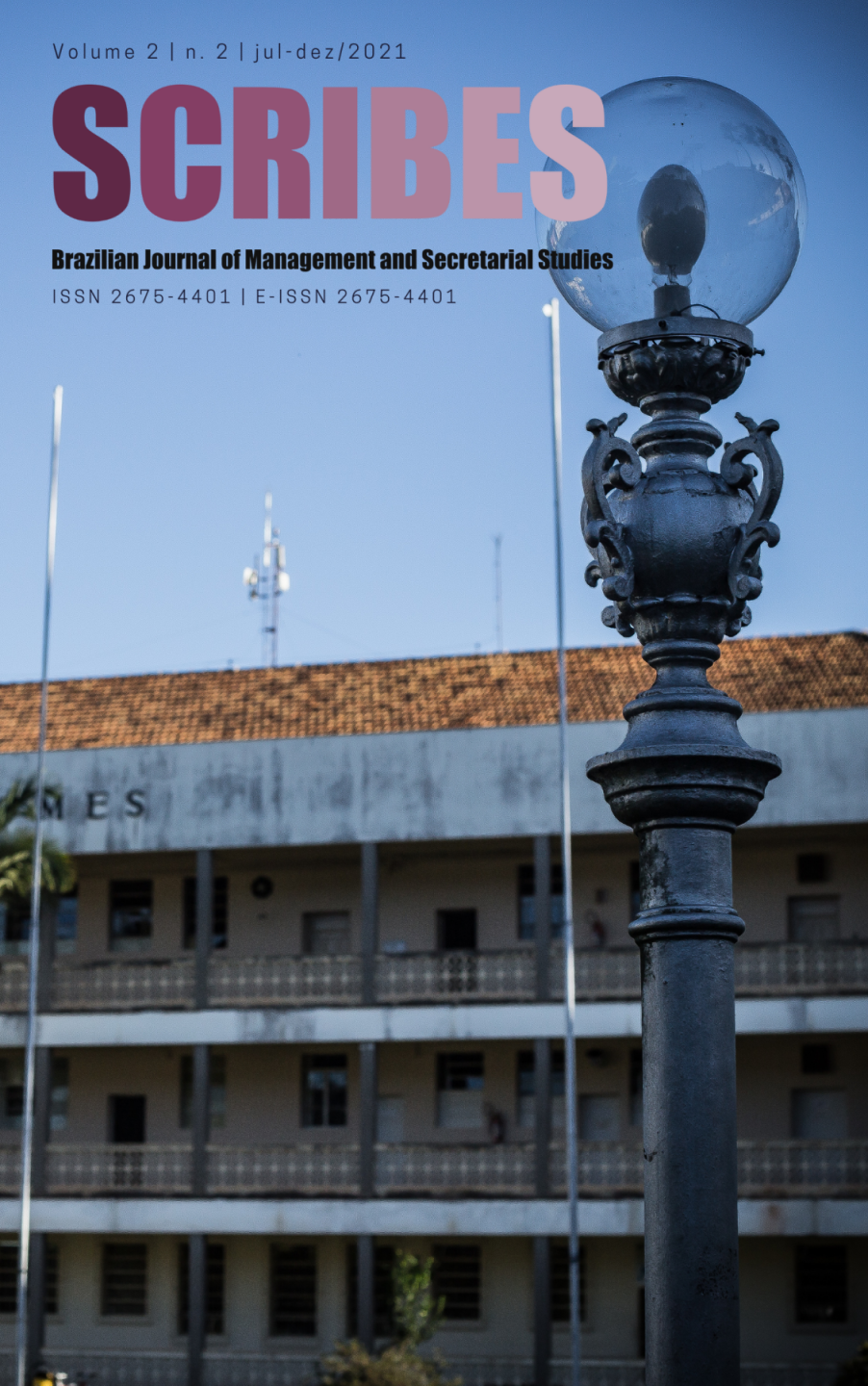Organizational Models from the Perspective of Technical-Administrative Servers at the Federal University of Paraíba
DOI:
https://doi.org/10.33228/scribes.2021.v2.13619Abstract
In organizations, in general, there are organizational models that reflect the way these institutions are planned and executed, which can be mechanistic, organic or managerial. To achieve organizational goals and objectives, coordination and harmony among employees is necessary, which requires a strong intellectual capital from these members. Thus, the investigation aimed to identify the predominant organizational models on campuses I and IV of the Federal University of Paraíba. The subjects are the Executive Secretaries and Administrative Technicians of the Federal University of Paraíba. In methodological terms, the research is a case study, under a qualitative approach. As main results, it was found that the predominant organizational model on Campus I and IV of UFPB is the organic model. Finally, it was seen that there is an opening in the sectors for the servers to participate in decision-making, so that their ideas and suggestions are used.
Downloads
Downloads
Published
Versions
- 2022-02-17 (2)
- 2022-02-16 (1)
How to Cite
Issue
Section
License
Published authors agree on the following items:
a. Authors keep copyright ownership whilst ceding to SCRIBES the right to a first publication. The material is also simultaneously licensed under the Creative Commons Attribution-NonCommercial 3.0 Unported Licence, which allows its publication with mutual recognition of authorship and initial publication through SCRIBES.
b. Authors are authorised to engage in third-party contracts independently, as long as they are pursuing a non-exclusive publication of the article originally published in this journal, such as having it appended to an institutional repository or included in a book as a chapter. Authorship and original publication by SCRIBES must still be acknowledged.
c. Authors have permission to and are encouraged to publish their research online, such as in institutional repositories or in their own personal web pages. They are allowed to do that before or after the editorial process, once it inspires any opportunistic alterations to be considered during the aforementioned process, and increase the content’s impact and value as a quotable work (read more on The Effect of Free Access).




